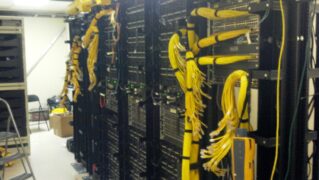Switching and Cabling – The final step in creating the ideal environment for VoIP is the physical network and how it all connects.
- Separation – This section is key to the ideal solution for a VoIP network. The Data (computer side) and VoIP (phone side) should be completely separate all the way up to the ISP Gateway. Here are the steps necessary to do so.
- Cabling – In an ideal world, there would be, as discussed above, a separate cable for each network device. In this configuration, each device would have it’s own dedicated drop from the back of the unit all the way to the VoIP or Data switch depending on what device it is.
- Switching – We recommend that the VoIP phones and Computers be physically separated and that includes the switches as well. Having a dedicated switch for the VoIP devices and a separate switch for the Data side is part of this. See table below for specifics. The Data switch(s) would be connected to the firewall, and the VoIP switch(s) would be connected directly to the ISP Gateway, thus avoiding the SIP and ALG filtering mentioned below.
- Firewall – VoIP does not like to be filtered. Most Firewalls filter SIP and ALG communications which is primarily how VoIP works. Many firewalls allow you to disable this filtering but even the most expensive firewalls make this difficult for the typical end-user to configure. With a proper firewall appliance installed and protecting the internal Data network, the filtering on the ISP Gateway can be completely disabled thus allowing all VoIP traffic full access to the Internet and VoIP Service Provider.

